
The exterior of Coworth Park, originally built in 1776
The Dorchester Collection’s country hideaway near London combines serenity with spa and some brilliant cuisine
Country factor:
15 minutes from Heathrow Airport, less than an hour from central London, this country house is set in a sprawling estate of parkland, lakes and polo fields. You feel like you are in the deepest rural idyll.
What to do?
A more pertinent question is, what not to do. There is, just across the way from the main house, an extensive spa with a swimming pool and hydrotherapy. There is an equestrian centre linked to the polo fields – come at the right time of year, and you can see the British royals play their favourite sport. Otherwise, you can ride. There is an all-weather tennis court, archery, and extensive grounds to get lost in doing long walks. In short, all the benefits of an English country house hotel without having to take a helicopter or drive several hours to get there from civilisation.
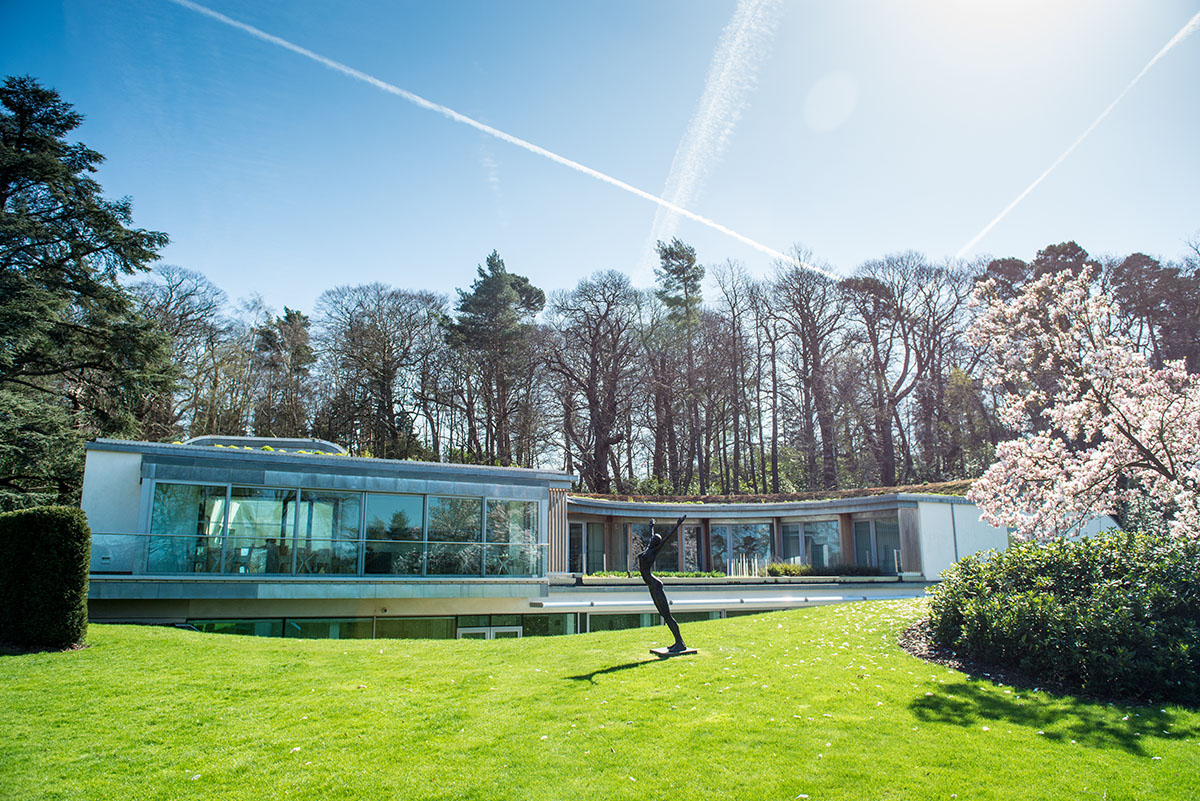
The Spa which works in collaboration with Germaine de Capuccini
What to eat?
Not so long ago, the cuisine was the question mark hanging over almost any British hotel outside London. Michelin-starred chef Adam Smith shows at Coworth Park how things have turned full circle.
Follow LUX on Instagram: luxthemagazine
Particularly admirable is what we would call his concept and execution platform. Across the menus in the different venues, it seems the dish is conceived, and can then be executed in different ways: traditional, vegetarian, vegan, or gluten-free.

The Drawing Room terrace which overlooks the grounds
There is no primacy of any style. Ingredients are piercing and local. It’s thoughtful and contemporary. Cooking thought leadership at its best. The main restaurant, Woven, has a delightful, classic modern feeling in its decor: no tablecloths, but as formal as you want it to be, with clever and expensive lighting.
Read more: Waldhaus Sils, Switzerland Review
The other restaurant, The Barn, is a more informal, but still highly polished and sophisticated offering. We would go to the former for dinner, and the latter for lunch. Or perhaps the other way round. Who knows.

Mansion House Junior Suite bedroom
Lying in
The decor in the rooms is perfectly judged, for where we are: not trying to be deepest wooden beam country style, but not city imposed on a rural dwelling either. Bathrooms are huge, beds almost as huge, and there is all the glitz you would expect of a luxury hotel.
Rates: From £570 per night (approx. €654/$700)
Book your stay: dorchestercollection.com/ascot/coworth-park
Darius Sanai

An aerial view of Waldhaus Sils with Lake Sils behind
It has long been a source of inspiration to poets, artists and philosophers – and Sils, in the high-altitude valley of Engadine in the Swiss Alps, still proves a haven of luxury and creativity
Arrival
Waldhaus – house in the woods. To an English speaker, it sounds pretty; to a German speaker, there are centuries of myth behind the forest legend. Sitting on a bench, in the larch forest in the grounds of Waldhaus Sils, we pondered this. To one side, the hotel’s terrace restaurant – a terrace dissolved in forest – was finishing up lunch service. Immediately below us, two clay tennis courts lay empty after a family session had finished – a daughter narrowly beating a father, awash with glee; a family that looked as if they had been playing tennis in the woods for generations.
Follow LUX on Instagram: luxthemagazine
Beyond, the mountainside dropped down and you could glimpse the valley floor through the trees: a flat glacial meadow and a blue-black lake containing a couple of islands, thick with pines. Beyond, a steep, largely treeless mountainside, grass, rocks, scree, peaks.
Waldhaus Sils is at the highest point of the Engadine, the wide, high-altitude valley that carves through the east of Switzerland like a scratch in the Alps. St Moritz is 10 minutes down the road, but the village of Sils has its own character and history. Nietzsche and Hermann Hesse lived and visited here; generations of artists came here for inspiration, and some, such as Gerhard Richter, 90 years old and widely considered the greatest living artist, still do come to stay at the Waldhaus.

The Waldhaus interior is a triumph of 20th-century modern design
The Experience
The hotel is on a rock just above the village, and what seems at first to be another in the mould of excellent palace buildings in the mountains, turns out to be rather more special.
To walk through the Waldhaus is like walking through a living museum of 20th-century design – when we say living, we mean it’s like a home, rather than curated for the benefit of others. There is a window in one of the drawing rooms that looks directly out at a rock face a couple of metres behind: the rock looks like an artwork in the frame of the window. Everything, from the wood panelling to the chess tables to the signage and the way the keys are arranged behind the reception desk, speaks of indulgent artistry.
Take a room with a balcony and it is as if you are in a tree house, only the balcony also as dramatic views across and along the Engadine and Lake Sils. The rooms themselves continue the theme of being in a home: no nouveau-riche over design here. If you crave three tons of marble in your bathroom, a Toto automatic toilet and Jacuzzi, you would be better to look elsewhere- but as a coherent and relaxing take on classical luxury, it feels wonderful to be in.
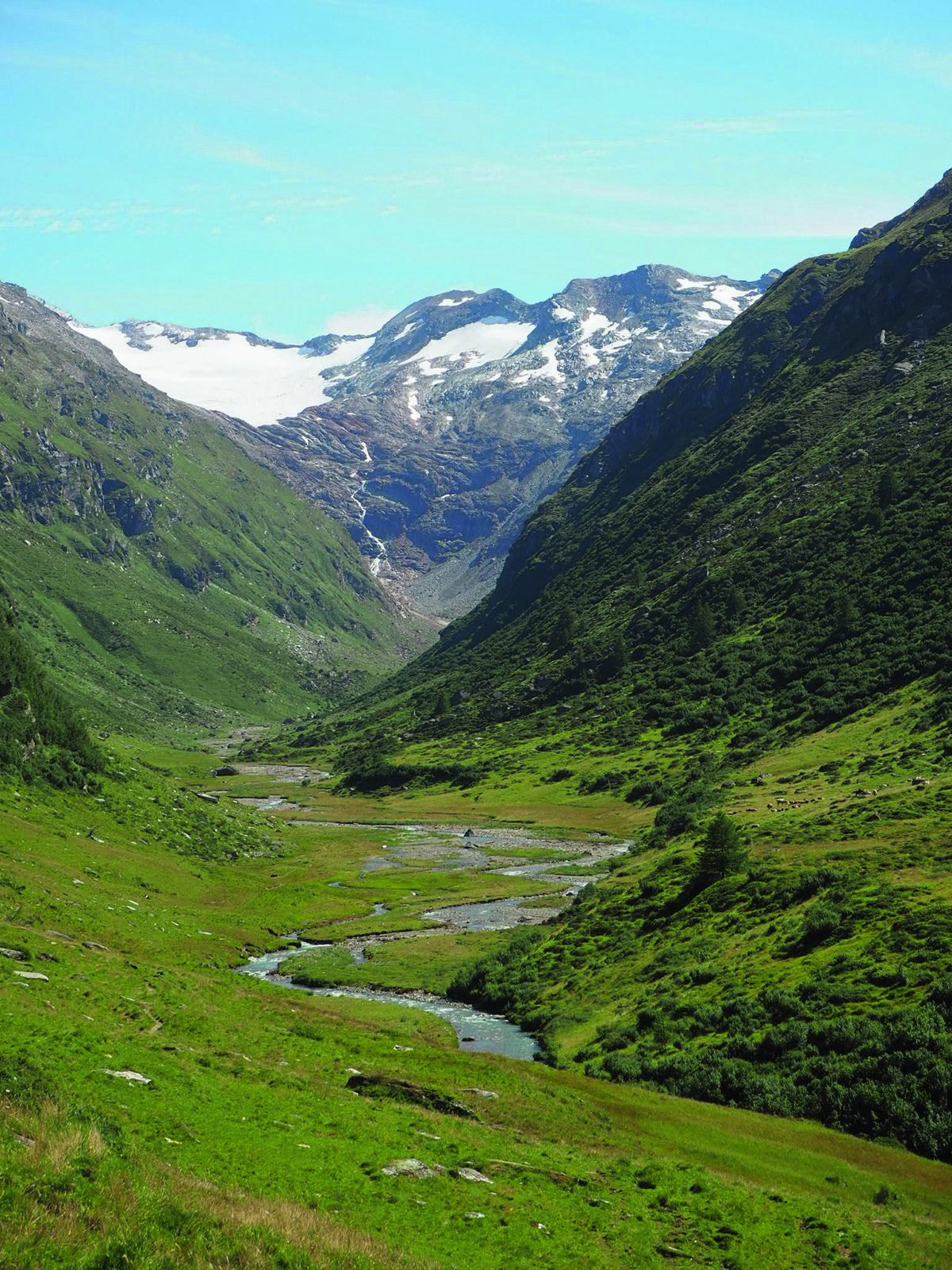
Val Fex, high above the Waldhaus, photographed by Isabella Sheherazade Sanai
Eating and Drinking
Most of the residents of the Waldhaus (and it feels like a community of residents, rather than hotel guests) dine at the hotel in the evenings. The dining rooms, high-ceilinged and table-clothed, have huge windows directly into the forest, as if you are in a nest. Each evening brought us a different variation on consommé, a broth made with the stock-variously-of forest mushrooms, local vegetables, corn-fed chicken or Swiss beef; one was made with hay stock, and was sublime.
Otherwise, expect Swiss mountain cuisine, precisely prepared, and a treasury of a wine list that virtually compels you to try the wines of the Büdner Herrschaft – the warm, sunny, bijou wine-growing region in the Rhine valley of eastern Switzerland, over the mountains. There is also the terrace restaurant, overlooking the tennis courts, serving salads and grills for lunch.

Activities
Woodland-walks, lakeside-walks around Lake Sils – inspiration to poets and philosophers – rock climbing, mountain hikes to the hidden Val Fex above the hotel…And that’s just the hiking and climbing, most of which begins on a path directly from the hotel’s back door.
Read more: Bittescombe Lodge and Deer Park, Somerset, Review
You can kite-surf and paraglide nearby, or stroll down to the village of Sils and see Nietzche’s house; or stay in the hotel grounds and swim (indoors), play tennis (indoors or outside in the woods), sunbathe amid the trees – or get a cavas and paint.

The conversation between Durjoy Rahman and Sam Dalrymple took place over Zoom. We have used artistic licence to create the photo montage above
In the third of our series of online dialogues, Sam Dalrymple, Activist and Co-Founder of Project Dastaan, speaks with philanthropist Durjoy Rahman about cultural reconnections post-partition, the importance of multi-cultural artists across borders, and the rapid shift in popularity away from the West and towards the East. With an introduction and moderation by Darius Sanai and created in association with the Durjoy Bangladesh Foundation.
Raghu Rai is a Magnum Photographer who chronicled the Independence war of Bangladesh in 1971 when the territory that was East Pakistan gained independence from what is now Pakistan. The Indian army ultimately came to the aid of Bangladesh after an enormous refugee crisis ensued. We present a selection of his works within this article
LUX: Sam, could you tell us firstly what sparked your interest in Partition and inspired you to create the ground-breaking ‘Project Dastaan’?
Sam Dalrymple: Project Dastaan began when my friends Sparsh, Ameenah and Saadia were at University chatting about the fact that everyone’s grandparents had migrated from somewhere in the Sub-Continent, and how bizarre it was that in the UK you could have the easiest conversations about this.
Follow LUX on Instagram: luxthemagazine
When you are in India, it is difficult to chat to a Pakistani, when you’re in Pakistan it’s difficult to chat to a Bangladeshi as these walls have been built up in the Sub-Continent, so that it is actually in the former colonial power where it is easiest to talk.
There were conversations about how Sparsh’s grandfather had migrated from near Islamabad, in Pakistan, and here was Saadia who was from near there and could easily go and take pictures of his old house or temple which had been impossible for Sparsh’s family for 75 years. They had no pictures of it, no idea where they were from. The ease from a London standpoint to re-connect triggered the whole thing.
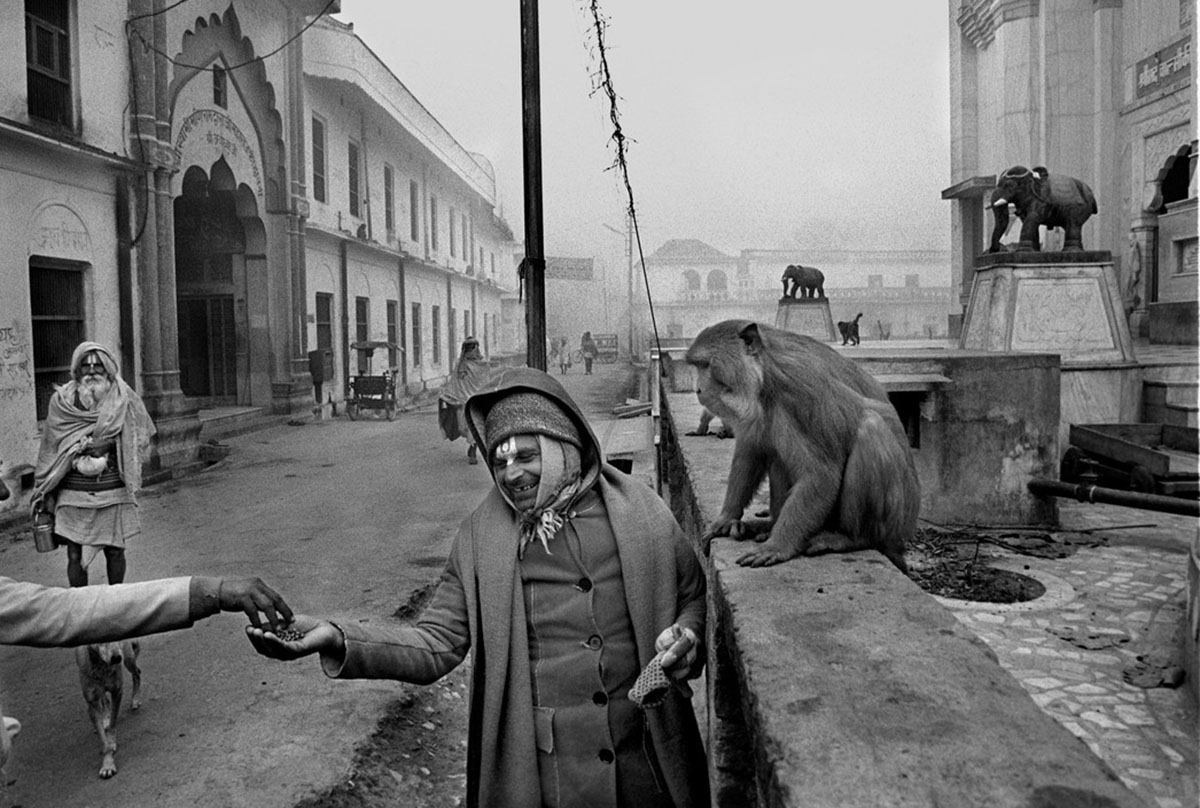
Ayodhya, india 1993
The partition that is the cause of this fragmentation in India was, simply put, the largest forced migration in human history. In the course of a year what had been British India, was divided into two territories, which is now three – India and Pakistan, which later became Pakistan and Bangladesh. This was 75 years ago and for most of that time, most of the migrated people have never been able to see their homes again.
So it began as an attempt to use virtual reality to re-connect Partition survivors across borders, so if you came from Lahore and had migrated to Delhi, we would go out and find your old Mosque, your old school, your old house and, if we can, find any friends who you knew before 1947.

Chawri Bazar, old Delhi, India, 1972
We additionally wanted to translate some of these stories that we were hearing, into animations with a cross-border, collaborative studio in Bangalore and Lahore, which was in itself an attempt at cross-border with team members scattered from Bengal to Punjab. Then, we finally made a film called ‘Child of Empire’, which just premiered at Sundance. It is a VR mini-movie, a 15-minute animated journey through the Partition based on Sparsh’s grandfather’s story and another man who did the opposite journey. It is about these two men 75 years later chatting to one another and the therapeutic discussion of their two journeys which mirror each other in so many ways but, obviously, have been polarised so much over time.
LUX: In the context of Partition, what does Partition and its consequences mean to you Durjoy?
Durjoy Rahman: I come from a generation where it was my parents who had seen the displacement, twice. They were born during this time and have seen the consequences and the aftermath of partitions first hand. I grew up hearing everything that happened in 1947, the riots and so on. So between me and my parents we have seen the largest displacement in the history of these civilisations that happened in this region. These experiences have influenced me to do activities surrounding Durjoy Bangladesh Foundation heavily.

Mother Teresa at her refuge of the Missionaries of Charity in Calcutta, during prayer, India, 1979
LUX: Do people have a strong sense of national identity currently? Would you say that this is down to cultural or religious differences?
SD: It is many differences and culture definitely plays into it. I think the memories of both ’47 and ’71 play into how people remember their pasts, but it is also a generational factor. The national identities are harder for the younger generation who never knew the other side of the border, whereas for a lot of people who migrated at the time nationalism was firing up these independence movements.
Art definitely plays into how we create a nation, with national anthems and the flag which of course crystalise these ideas of nationhood. What we’re seeing now is the crystallising of losing the generation who knew undivided India as undivided.

Imambara, Lucknow, India, 1990
DR: Nationality has always been an important element in the subcontinent. We always talk about India and Pakistan, but I would also include Sri Lanka, Nepal and Bhutan in this context. Everyone holds their own nationalistic value to identify themselves and where they are from. But culture and religion, these two determined factors were also a factor when the British divided the subcontinent with the Muslims in Pakistan and left India where it was. A lot of people said ‘well, religiously you are all the same’ but religion is not the only deciding factor. We were culturally different so that was also important.
We are Bengali as Sam just said – we were never Pakistani, maybe we were all Muslims, but we were culturally different. So culture is a very important factor in defining borders and nationality. How you possess your cultural identity, this is what I believe defines you, and no matter how younger generations perceive themselves as a global citizen with a global identity, the identity borders will remain in our lifetime.
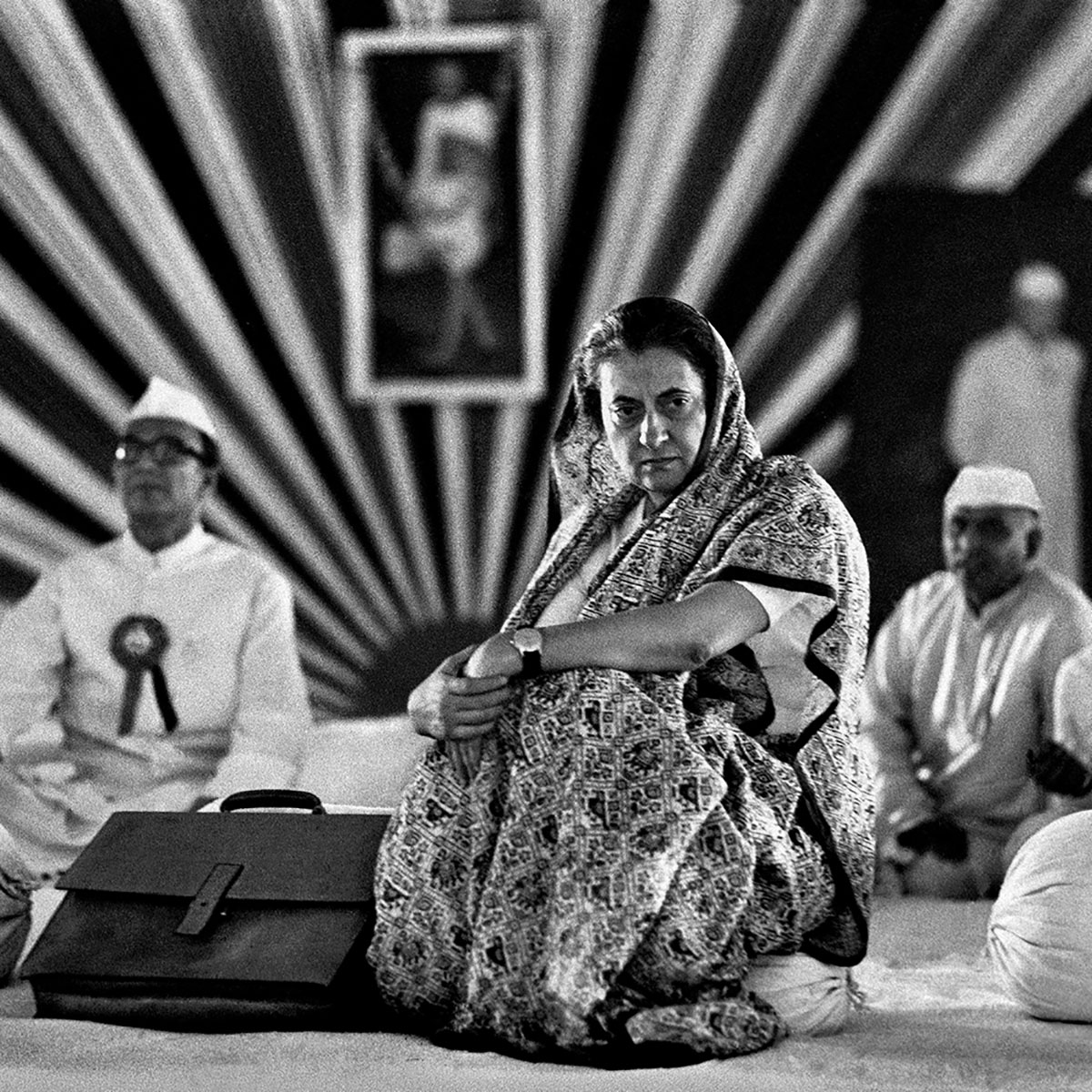
Indira Gandhi at a Congress session, Delhi 1967
LUX: Sam, Project Dastaan is ultimately a unifying project taking people virtually across borders. How has it been received among the people you deal with?
SD: It has touched people because it was something they thought was impossible, to see their old homes. The key thing has been not trying to look at the big and complex questions of Partition – We’re trying to show conflict through the eyes of an 8-year-old child. The generation that is still alive were mostly 12 or younger 75 years ago. We’re trying to show it through the eyes of the generation who’s still around. One of the things they would want to see is their old playground, their old houses, and the things that everyone can relate to. I think addressing the conflict and the great divide through these memories and nostalgia can be very healing.

Darjeeling Himalayan Railway (the Toy train), India, 1995
LUX: Durjoy, you wish to promote the art of people who may not have had a voice, without borders. How does that relate to the very definite borders in Pakistan, Bangladesh and India?
DR: Since DBF was established in 2018, our projects have been based on the concept of art without borders. We never considered ourselves a foundation that had originated from Bangladesh. We started working with creative personalities regardless of whether they were visual artists, musicians, literature backgrounds, performance artists and we did not consider which region they are from. We have always identified if their practice relates to the mandates that we are trying to highlight; displacement, disadvantage, ethnicity, some kind of challenge which probably obstructs their creative development. So, art without borders was our primary goal.
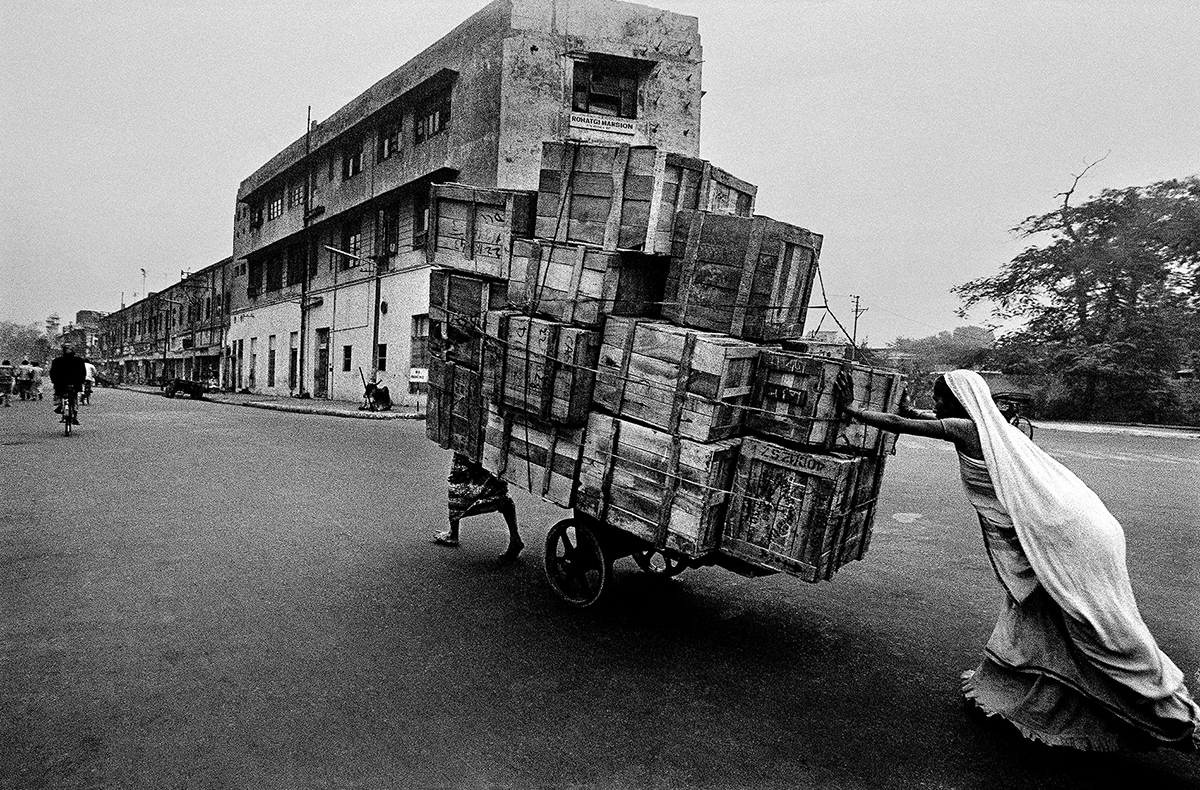
Woman pushing cart Delhi 1979
LUX: Sam, with Project Dastaan, what will make you feel like you have achieved your aim, what will you be doing in 5 years, 10 years?
SD: Who knows, is the answer! The big thing we’ve been working on is this particular year as it’s the 75th anniversary, and I think the aim has always been to raise awareness about what happened – the aim has always been to try and get people to record these stories, because they are disappearing rapidly. The foundation of our project has been oral history, and the contemporaneous generation is rapidly disappearing. I think we also have a particular aim within Britain, to get Britain aware of its role in the events.
LUX: Regarding artists and the film-making that you employ, was that something that you had conceived from the start that is not just a means of storytelling, but something that you want to focus on and encourage?
SD: With Project Dastaan, the aim has always been cross-border collaboration. For our animation teams, one of our animators had a family who fought in 71, another family was part of the trading diaspora across the Bay of Bengal. I think one of the interesting things is, and I’m not sure how deliberate it was, but the types of animators and the team we built around ourselves, seems to have brought in people whose stories kind of corroborate the stories we are telling.

Hand building highway – Hydrabad, India, 2004
LUX: Durjoy, with regard to the next generation that you’re supporting in terms of art and culture, do you feel that there’s a role for creative practitioners to break down these borders?
DR: I would say that I am not only very hopeful, but I am very optimistic. In this post-covid scenario, in this globalised atmosphere, I personally believe that we were in the right moment where we could take the entire South Asian art movement to the next level. Now the West has started looking at the East. Of course, our foundation and activities focus on promoting artists from South Asia, but we have seen a massive global increase in interest for South Asian artists. I also believe that these artists will take great advantage from the rising virtual scene within the context of the more active online and digital art scene within the past two years.
SD: I think what you said then is exactly right. One of the most interesting pieces that I’ve read recently was by Fatima Bhutto in her book ‘New Kings of the World’, which talks about the shift in the past 20 years. The biggest film industry is Bollywood, the biggest TV industry is Turkey now and the biggest music industry is now South Korea K-Pop. I think there is a lot of hope and a lot of growth in the artistic sphere here. I don’t think that will necessarily mean the borders themselves disappear; I don’t think that’s going to happen. I think there’s going to be more collaboration, more interesting art pieces and more embracing of technology for it.

Local commuters at Church Gate railway station. Mumbai, 1995
DR: Would you ever choose another region as your beaming point, other than India?
SD: I think the idea of virtual reconnections is something that you can use in an array of different countries, but we are so focused on areas affected by the Partition as that is where the personal connections of the team lie and a very specific area of interest where we can enact real memory connecting change. What’s unusual is that these countries are so close in so many ways, it’s just that trauma etc has left them severed from one another It’s a bizarre, specific situation that neither of them have ability for tourist visas, there’s no tourist visas for India and Pakistan, you can’t just visit, you have to have a reason and government approval.
Read more: Rana Begum and Durjoy Rahman on South Asian art’s global ascendancy
LUX: Possibly controversial, but I would love to hear from you both, what do you consider needs to happen for conceptions to really change around the Partition and affect the vast majority of the population?
DR: We have to perform what we believe and have to do what is good for the community, what is good for the region, despite what the supremacy wants to establish.
SD: I don’t think there is a simple solution, but I think that creating conversations and conflict resolution is always a noble aim. I think conflict resolution and actually talking about it is where to start, without bias and actually listening.
All images © Raghu Rai
Find out more:
durjoybangladeshfoundation.org

St. Eden vineyard
Darius Sanai examines the creation of Bond, one of the world’s most desirable wines and brainchild of Napa Valley wine royal Bill Harlan, over a tasting with its winemaker
Legacy is an important concept in the luxury industry. In a world where perception and status form a fundamental part of a brand, legacy means stability, and retained value. A Ferrari derives its value partly from the racing Ferraris of the 1950s, now worth multimillions. A Picasso or a Matisse is valuable because the artists retained and enhanced their status long after they stopped producing works, though the legacy of their collectors and dealers.
The world’s great wine brands have long traded on legacy: indeed, they are among the longest-lived legacy brands in the world, Chateau Haut-Brion, owned by Prince Robert de Luxembourg, was name-checked by Thomas Jefferson, American revolutionary and one of the country’s Founding Fathers. Brands like Chateau Lafite, Chateau Petrus and Domaine de la Romanée Conti may be hot among a new generation of collectors, but they have been desired and collected by royals and the wealthy for centuries.
No watch, jewellery or leather goods brands can claim a legacy as long as the world’s luxury wine brands: Chateau Latour came to prominence as long ago as 1680, centuries before Hermès, Louis Vuitton, Patek Philippe or Rolls Royce existed.

Vecina vineyard
Bill Harlan is the founder and owner of Harlan Estate, one of the wine world’s modern luxury brands, based in Napa Valley, California. Unlike certain luxury goods, whose brand equity can be created by the illusion of marketing, the status of a wine, as a consumable product, rests largely on its inherent quality. No amount of brilliant marketing will make collectors crave a mediocre wine.
Harlan’s wines rose to the top of the tree through their quality, and also scarcity: to this day, to secure a case or two of top vintages, money isn’t enough (although they are as expensive as any of the world’s top wines), you need contacts.
Follow LUX on Instagram: luxthemagazine
Harlan stepped back and handed the reins to his son, Will, a couple of years back, although Harlan Sr is still involved in the background. And one of the founder’s most interesting moves was the establishment, in the late 1990s, of a sister estate to Harlan in Napa Valley: Bond.
Bond would make wines from specific vineyards, all planted with 100% Cabernet Sauvignon, deemed by Harlan and his team to be the best of the best in the region. The stated aim was to create “Grand Cru” quality wines, from specific sites whose terroir – combination of climate, soil and positioning – had been analysed closely.

Melbury vineyard
Grand Cru is, itself, a challenging term in the wine world: in some places, like Burgundy, it generally denotes the very best, and most expensive, wines in the region and the world. In others, like Champagne, it is less meaningful, in Bordeaux the term “Grand Cru Classe” covers hundreds of estates at different levels, and in Napa it has no formal meaning at all.
But a self-certification from the Harlan family has a meaning of its own, given their position at the top of the Napa Valley wine tree. And Bond is all about legacy: just as Domaine de la Romanee Conti has been known as among the very best physical vineyard sites in Burgundy for centuries, so Bill Harlan’s stated intention is for Bond’s vineyard site to be known as the very best places to create Cabernet Sauvignon in Napa Valley for hundreds of years to come.
And it takes many years to make, and judge a great wine: for a great wine is not one that tastes excellent when it is five years old, but one that develops and is magnificent when it is 50. So, the jury is by necessity still out, but that doesn’t stop us from dipping our toes in the judgement pool.

Pluribus vineyard
With that ambition in mind, Darius Sanai settled down for a Zoom tasting with Max Kast, Bond’s Estate Director and Cory Empting, Bond’s managing director of winemaking, of wines from Bond’s five sites: Melbury, Quella, St Eden, Pluribus and Vecina. We have a little history here, because a few years back, Darius included a bottle of Bond Melbury in a tasting of the world’s greatest Cabernet Sauvignons, which he hosted for the Prime Minister of Kazakhstan at the Four Seasons George V in Paris, which he chronicled in GQ magazine.The Bond wine was the overall winner in a field that included the likes of Chateau Lafite, Chateau Margaux, and California’s Screaming Eagle.

Max Kast, Bond’s Estate Director
Empting is an engaging and self-effacing tasting host, without a hint of pomp or self-aggrandisement, despite the desirability of his products. He told LUX that he is constantly examining new sites, making wines out of them to assess their potential, to see if any other wines can be permitted into the Bond club. For the moment, there are five, all of them sharing power, finesse, and a sense of grandeur. Each subtly different in character, these are attention-seeking wines in that they demand your full intellectual engagement: they would be the centrepiece of any dinner, like an extra guest.

Cory Empting, Bond’s winemaker
Although we will all have our favourites, it is not possible to choose an objective winner here: Bond wines are about the character of these ultimate vineyard sites in one of the very greatest wine growing areas in the world.
The Bond wines (tasting notes by Darius Sanai); in order of tasting, not of preference. All wines from the 2013 vintage.
Bond Vecina
A kind of wildness here, amid the grandeur and size. Very savoury, umami and smoked bacon with mulberries. Also a refreshing twist. My personal favourite, and one to sip, on a hilltop, alone, contemplating sunset over the distant forested hills.
Bond Melbury
Big and rich, but also stylish and layered, not overwhelming. This would be the Bond wine to serve to a lover of Chateau Margaux, to show California’s equivalent, before racing away the next day in your Ferrari GTO.

Bond wines: Melbury, Quella, St. Eden, Vecina and Pluribus
Bond St Eden
Fascinating wine: one we felt was being opened far too young. Very structured, concentrated, packed with nuance, shielded by a shell at the moment: stones, berries, plums, Mediterranean herbs, it’s all there. Decant it ahead of time and serve to a collector of Rembrandts, next to one of their Rembrandts. It’s that grand.
Read more: Chef Heston Blumenthal: The Culinary Resurrector
Bond Pluribus
Pluribus is so concentrated, so dense, that it would be the dominant factor in a meal of Simmental beef with foie gras and a béarnaise sauce. There’s a black fruit nature to this wine, with a kind of intense, graphite power, you feel you should write a letter with it.
Bond Quella
This fascinating wine was quite closed, almost light, on opening, but transformed in the hours after our tasting to have a Burgundy-style elegance and lift, along with a freshness of mountain river beds and plenty of dense fruit. We’d find the oldest vintage available to drink now, or buy a case now to drink in 2040.
Find out more: bond.wine

Sassan Behnam-Bakhtiar, Energy Within, 2023
The French-Iranian artist Sassan Behnam-Bakhtiar has a solo show opening in Phillips on Berkeley Square. His compelling paintings examine themes of loss, anger, nature, healing and positive and negative energy. Each of Behnam-Bakhtiar’s paintings in the series reflect the internal structure of trees which he connects with trauma-recovery and healing. The selling exhibition has been supported by his German gallerist Setareh and is curated by Kamiar Maleki, erstwhile director of Photo London among other hats.
Behnam-Bakhtiar comes from a notable Iranian family; his great uncle Shahpour led the country’s last attempt at creating a liberal, democratic regime before the Islamic revolution ushered in an era of Muslim extremism. Jasper Greig, emerging collector and philanthropic advisor, spoke to the artist in his home in Cap Ferrat, about the personal experiences that informed his increasingly sought-after art
Jasper Greig: I would like to ask about your early life and how you got into painting?
Sassan Behnam-Bakhtiar: I am a fourth generation artist; my father was and is an artist and was highly involved in the government before the 1979 Islamic Revolution in Iran, as one of the key figures in bringing and developing modern art to Iran back in the day. Family-wise I was always showing signs of creativity and was very tight with my Dad before my parents separated when I was 3 years old. I was very close with my Dad until the age of 5 when I was still around in Europe – I was born in Paris. My first memory of art was my father teaching me how to paint!
I always had this creativity within me. Unfortunately the support to pursue my passion was not present in any way as a child and young adult, after being separated from my father.

Sassan Behnam-Bakhtiar, The Secret of Life, 2023
JG: Was your father very supportive of you wanting to pursue art as a career?
SBB: He was, but unfortunately, my parents divorced when I was young! But it stayed in me. That was the seed. When you’re a child, your first 3 years are the most formative – my own son is three and a half now, so I have seen it with my own eyes.
Follow LUX on Instagram: luxthemagazine
JG: You were born in France to an Iranian family, and then unusually moved to Iran. Did you feel your family’s reputation changed your experiences in Iran?
SBB: Being in school, I remember reading a chapter about Shahpour Bahktiar, the late Prime Minister, my great uncle, who was assassinated in Paris. They were showing videos of people chanting, literally swearing at our family. Everybody knew I was from that family so I was basically an outcast while I was in Iran. They wouldn’t accept me as an Iranian because I was born in France and I came from what they would call a ‘western family’. It was very tough at the beginning, until I integrated at about 12 or 13. I used to get bullied all the time. There are a lot of people over there who are like me so I found my group eventually, but for the first few years it was hell.
Simultaneously, I was always highly frustrated about the way Iran was being portrayed, even though I was not accepted by my own society.
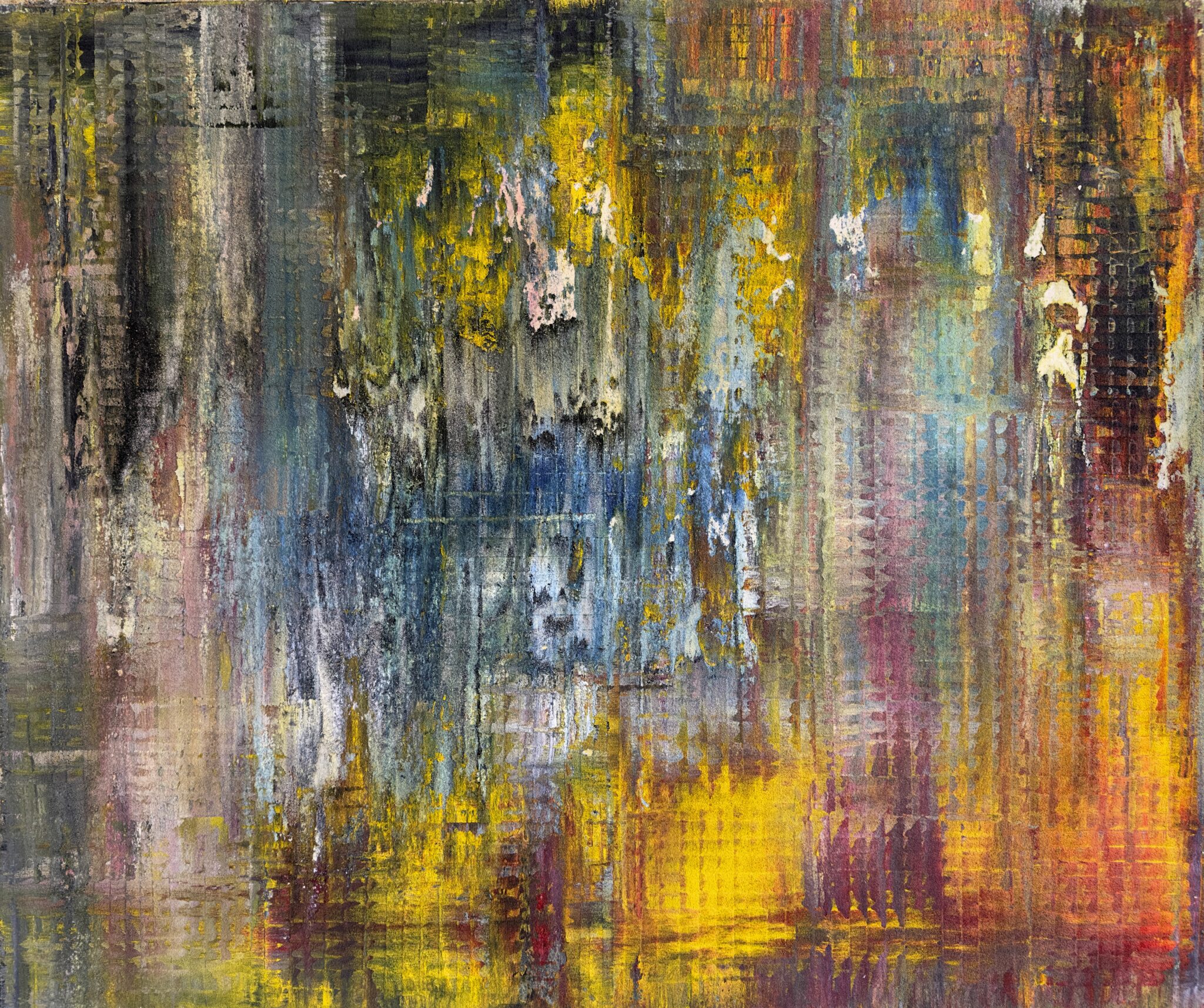
Sassan Behnam-Bakhtiar, Powerful Beyond Measure, 2023
JG: Can you tell us about your journey into increasing your vibrations through meditation? You said you discovered that at a really low point in Iran.
SBB: I see it as a form of rebirth for me. I was at the lowest point in my life, and going through that transformation during those harsh times changed my life forever.
It was after taming my anger that I went back into my studio and I was looking for that signature style of work that you can see today. I will never forget – I did a body of work and it was the last painting from that body of work that was a two by four metre painting, a big one, where I actually found it. The whole body was exhibited at Saatchi Gallery in 2017. That was the first time I brought these paintings to the public because they were very intimate. Obviously, since then my style has developed and critics come and go – some say my work has the romantic qualities of a Monet, others say I am the perfect melting pot with my Persian background and Western techniques. Everyone has their own thing to say, but for me, my works are representations of energy at their core, no matter what subject I’m trying to depict.
JG: Your paintings involve the building up of layers, scraping those layers, relaying and spreading them back over each other. Does each painting start from a meditative process?
SBB: There were some small figurative elements to the works which slowly started to die out – nothing is planned behind my work. Those paintings at Saatchi, you can still see the collage elements on the work – they were the transition between the collage and the painting. Today, at least for now, I am highly focused on my abstract paintings and what I can do with my signature style of work. For now I can confidently say we will probably not be seeing any figurative elements for a while to come. But nothing is planned, everything is organic. I’m in a different zone when I paint.

Sassan Behnam-Bakhtiar, Earth, 2023
JG: Some of the greatest artists like Bacon and Freud, writers like James Joyce, all worked best away from their homeland. Do you think this can be a kind of liberation or do you think there is always a perpetual feeling of loss?
SBB: It’s difficult to explain how you feel because if you add on everything that has happened to me from a young age to today, if you feel it and you see it, it is the combination of all these things that will give you those emotions while you’re creating art. When I am working I find myself wearing a lot of the complicated times I have had on the surface of the canvas, but immediately I want to cover them.
Read more: Art Dubai opens in support of South Asian artists
It has shaped the way that I paint today. I would say that everything had a direct impact. I definitely miss home very much, even though things have been tough there for me. Whatever happened happened for a reason, for me to be able to paint the way I do today.

Sassan Behnam-Bakhtiar, Tree of Love, 2023
JG: If you were describing your paintings to an alien how would you describe them?
SBB: It’s very simple. My painting provides a window for you so you can have a better understanding of who you are. I have a much better idea of my own capabilities as a human being – I’m not saying I know it all, I’m still on my journey. But we are capable of powerful things beyond measure. You can heal yourself from a lot of injuries for instance, which I can do now.
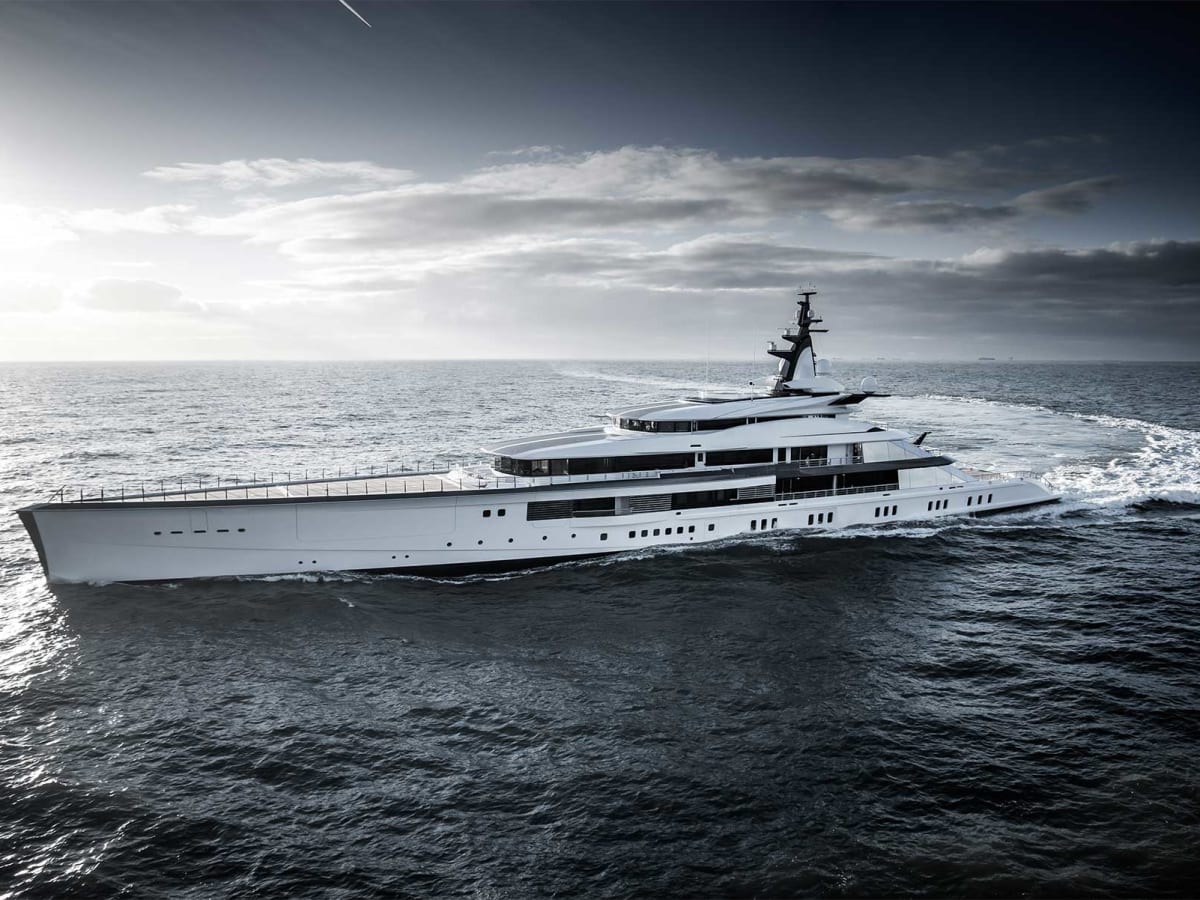
Managing Director of Lateral Naval Architects, James Roy, speaks to Samantha Welsh about innovation and sustainability in the yachting industry
LUX: What made you embark on your career as a naval architect?
James Roy: I grew up in a sailing family, and the sea must have gotten under my skin at an incredibly early age. I remember, aged five, seeing a ship sail past and drawing it; with the clear intent of doing that for a living when I was older. However, the path to success is rarely a straight line, but after some twists and turns I arrived at Southampton Institute in 1992 to study Yacht & Powercraft Design. Having never excelled academically at school I suddenly found myself with a fresh drive and ambition that I had never experienced and graduated top of my year, such is the power of having meaning and passion in one’s work.
LUX: Why did Lateral come about and how do you manage your collaborations?
JR: Lateral is the result of 26 years development. Ultimately, the company is an evolution of the first business that I joined in 1996 (Nigel Gee & Associates). Via evolution of that company, mixed with some acquisition and collaboration, Lateral was brought to life. Reflecting on that path, it has been innovation within an evolving industry that has been a key part of navigating the many possible outcomes that could have come to pass. Whilst the road ahead may be beset with uncertainty it is innovation that often acts as a compass to set direction. When it comes to collaboration, Lateral takes an ‘open-source’ approach. We want to remove any barriers for creativity. Our ethos is that engineering can enable design innovation, and we intend to make that a reality with every project.

LUX: Engineering or architecture, which comes first?
JR: This is a good question, and much like quantum mechanics, both answers can be right and wrong at the same time! There are some projects where the performance specification may be highly demanding, and in such cases an engineering approach may be best suited at the start, and there may be other projects where the functional specification may be leading, in which case architecture takes an initial lead. The reality is that in most projects there is a requirement for both performance and function in some balance. This dictates collaboration from the outset being a key ingredient. Ultimately, collaborating all comes down to people.
Follow LUX on Instagram: luxthemagazine
LUX: What is meaningful innovation to you?
JR: Innovation is often confused with invention. To innovate does not mean inventing new things, it means finding solutions to things that did not exist before. Many innovative solutions use existing technologies, but package them in a unique way to solve a particular problem. What I find fascinating is that innovation often leads to improvements to ‘problems’ that no one was aware of, by doing so they improve our lives and experiences. These innovations becoming truly meaningful. To find such innovations is often the result of curiosity; playing with ideas in stolen moments, weaved together by thoughts from diverse projects, often finding something by chance. As Einstein said, ‘creativity is the residue of wasted time.’
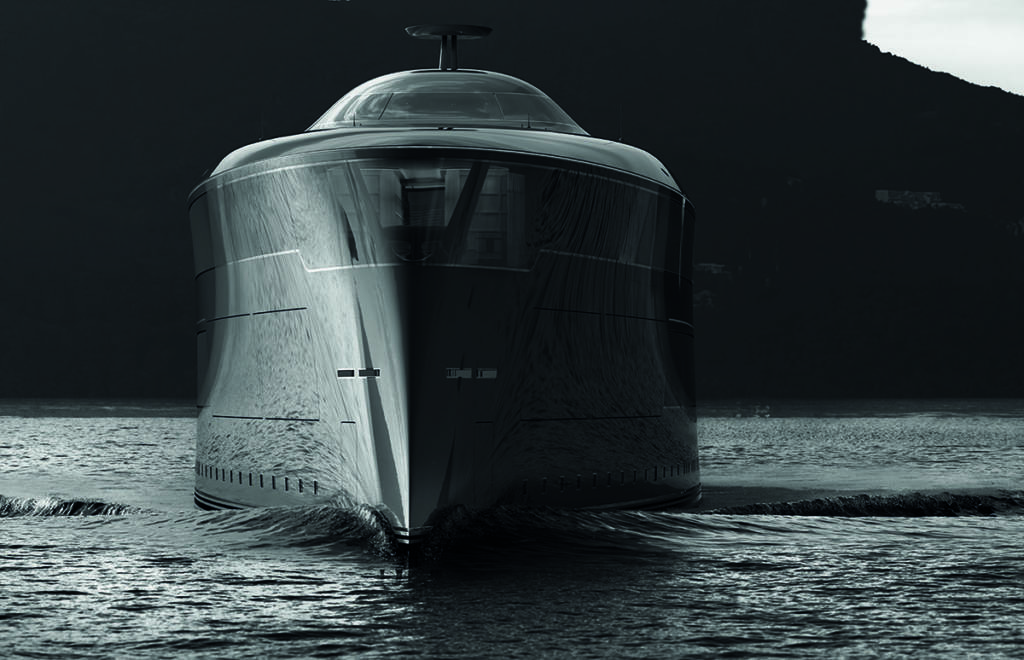
Sinot Yacht Architecture & Design, Lateral-Sinot net-zero concept collaboration
LUX: How do you design-in a net zero target?
JR: Net-zero is a straightforward idea but complex in execution. Designing for net-zero is quite simple, we are doing that already by engineering flexible architecture into new superyacht platforms, however they can only achieve net-zero in operation via accountancy. The use of various alternative fuels will still lead to the emission of carbon, for these to be net-zero there must be an accountancy that the carbon emitted has been captured somewhere else. Net-zero is therefore an eco-system spanning many industries, regions, and nations.
LUX: Are superyachts following the motor industry in adopting electrification as a viable alternative to fossil fuel?
JR: Yes, electrification is being embraced but in a different context. Whilst cars are mainly going full electric, yachts are remaining the equivalent of an electric hybrid. This is simply down to the scale of energy needed for a yacht to operate, and the limited storage capacity of batteries. Designs such as Kairos from Oceanco / Pininfarina / Lateral are pushing the boundary and achieving 75% of daily operation on battery. However, we can be sure that battery technology will advance and it is a core part of our future proofing strategy to make batteries part of our energy and propulsion system architecture choices.

LUX: We read about alternatives like liquid hydrogen-based systems, will these become industry-standard in the future?
JR: There are many alternative fuels being explored by the marine industry (and other industries) in the move to decarbonisation and net-zero. Some of these fuels, such as bio diesel, are a simple ‘drop-in’ equivalent for the diesel we already use. Other fuels, such as methanol and liquid hydrogen can make compelling options for future net-zero fuels. However, all of these require more space on board as they have a lower energy density than current fossil fuels. In the future there will be no singular solution, there may be many different future fuels in use. We can be certain that this will be a (welcome) challenge to designers and engineers; we will need to become even more efficient in energy use (so we require less fuel as it uses more volume) and we will also need to offer at least equivalent levels of functionality but in a smaller package. This is the creative challenge we will face in the future; such challenges drive us to innovate.
Read more:Driving Force: Porsche Panamera 4S E-Hybrid
LUX: What do you tell your next gen clients when they are spoiled for choice?
JR: We live in an age of so much choice that it often becomes an enemy to decision making. When I was growing up, we had three TV channels, now we have hundreds but choosing which one to watch is surprisingly quite hard at times! It is a key skill of any leader to be able to guide their clients through the complexities of choice. There are some choices that are complex, technical, rational, and others which are very emotive and personal. Equally there are a multitude that fall in the grey area in between, and guiding clients in these choices without making them feel like they are taking unmanaged risks is key.
Find out more: lateral.engineering

Image courtesy of Aicon Gallery
Pakistani engineer turned conceptual artist, Rasheed Araeen, is using his geometric art to highlight racism and inequality. LUX explores the history behind his celebrated works

Rasheed Araeen
Rasheed Araeen is now considered one of Britain’s pioneers of minimalist sculpture during the mid to late 20th Century. But during that period, he received little institutional recognition for his contribution to the modernist discourse in Britain. Araeen’s Pakistani background side-lined him as a non-European whose work was consistently evaluated within the context of post-colonial structures, which inevitably resulted in far less exposure.

Black Square Breaking into Primary Colours, 2016, from the Durjoy Bangladesh Foundation
This latent racism led to his work in the 1970s and 1980s – in performance, photography, painting and sculpture – developing an overtly political content which drew attention to the way in which black artists were invisible within the dominant Eurocentric culture.

Untitled, 2015
Araeen is now famously known for using geometric structures, in which vertical and horizontal lines are held together by a network of diagonals, to play on the links between Eastern and Western thought and the frameworks of social institutions and aesthetics.
Follow LUX on Instagram: luxthemagazine
He often overlays his photographs within geometric structures, to further emphasise humans and the social structure in which they exist.

Rhapsody in Four Colours, 2018. Image courtesy of Aicon Gallery
Araeen comments, “I’m sick of the avant-garde and I want to get out of it. It is believed that the idea of abstraction is a twentieth-century phenomenon. In Damascus, it took place 1200 years ago. Nobody wants to hear about that in Europe.”
Read more: Behind The Lens Of Sunil Gupta’s Photographs

OPUS TD 3 (2), 2017. Image courtesy of Aicon Gallery
Through his artworks and books, Araeen has become a key activist in establishing a black voice in Britain’s art scene, publishing ‘Black Phoenix’ in 1978, and subsequently ‘Third Text’ in 1987, and ‘Third Text Asia’ in 2008. Araeen also founded Kala Press, to spread information and recognition of unacknowledged African and Asian artists in Britain who contributed to the development of post-war British art.
Rasheed Araeen lives and works in London. He is represented by Grosvenor Gallery.
This article was published in association with the Durjoy Bangladesh Foundation

Kelly Russell Catella
For International Women’s Day we are spotlighting Kelly Russell Catella, Head of Sustainability and Communication at COIMA, a major Italian real estate fund manager. COIMA has total investments of 5.5 billion euros with a declared focus on large scale sustainable urban planning. Here, Catella speaks with Samantha Welsh about making cities vibrant, accessible and healthy for all and the importance of an environmentally conscious city for a community
LUX: How did you start your journey on driving better approaches to sustainability in city-making?
Kelly Russell Catella: COIMA has always been very focused on quality and sustainable development since it was founded nearly 50 years ago. My own professional journey in the industry first started coordinating the first Italian Urban Land Institute chapter in Italy until our family established in the Fondazione Riccardo Catella in 2005. The Foundation is a not-for-profit institution with the mission to improve the quality of urban life and promote the culture of sustainability in cities. Since then, I’ve also been responsible for leading sustainability at COIMA, which is a value we truly believe in and is integrated deeply in the process of our value creation for all stakeholders.
One of our most important projects is Porta Nuova in Milan, one of the largest urban regeneration projects to have taken shape in Europe. Last year it became the first urban neighbourhood in the world to achieve both the LEED and WELL certifications for Community. These are the leading global certifications related to sustainability, health and wellbeing of buildings and communities. Achieving this ‘world first’ was for us a real endorsement of our approach, which is about focusing on the long-term sustainability of the entire neighbourhood, not just specific buildings. We find it key to think about the place, the whole community, and how the transformation fits into the context of the needs of the wider city.
LUX: Why was pursuing LEED and WELL certification for Porta Nuova so important?
KRC: Creating more liveable, healthy communities and places where people are in contact with nature, culture and beauty is what really drives our daily effort. Achieving the LEED and WELL for Community ratings for Porta Nuova is a validation that we worked to deliver on our promise to create a genuinely sustainable community in a measurable way. It is also about constantly challenging ourselves to do more, to push the bar higher and set new benchmarks in the industry.

Biblioteca degli Alberi Milano (BAM), the public park in Porta Nuova
While certifications and ratings are important to measure and prove the positive impact of a project, it is vital that we do not fall into the trap of a superficial ‘box ticking’ approach to sustainability; they are not an end in themselves, they are part of a wider methodology to create a comparable standard. It comes down to all of us to show genuine leadership in the transition to the low carbon economy – passion and commitment to deliver positive social and environmental impact and transparency in reporting.
LUX: The Bosco Verticale towers in Porta Nuova have become a global icon and the face of the new more eco-friendly Milan. Do they provide a prototype of more sustainable development for other cities?
KRC: At the time the Bosco Verticale – literally vertical forest – was the first project to integrate trees on such an ambitious scale. There are 780 trees and 16,000 shrubs and plants across the two residential towers, which is equivalent to around 20,000 m2 of forest. In many ways the development gets better with age, as the trees grow and mature and the benefits to the residents multiply – from regulating the temperature of the building to enhancing mood and wellbeing. Our partner on the project, the visionary architect Stefano Boeri, is now taking the vertical forest concept to other cities, including Dubai and Eindhoven, creating a new generation of high-rise urban buildings completely covered by the leaves of trees and plants.
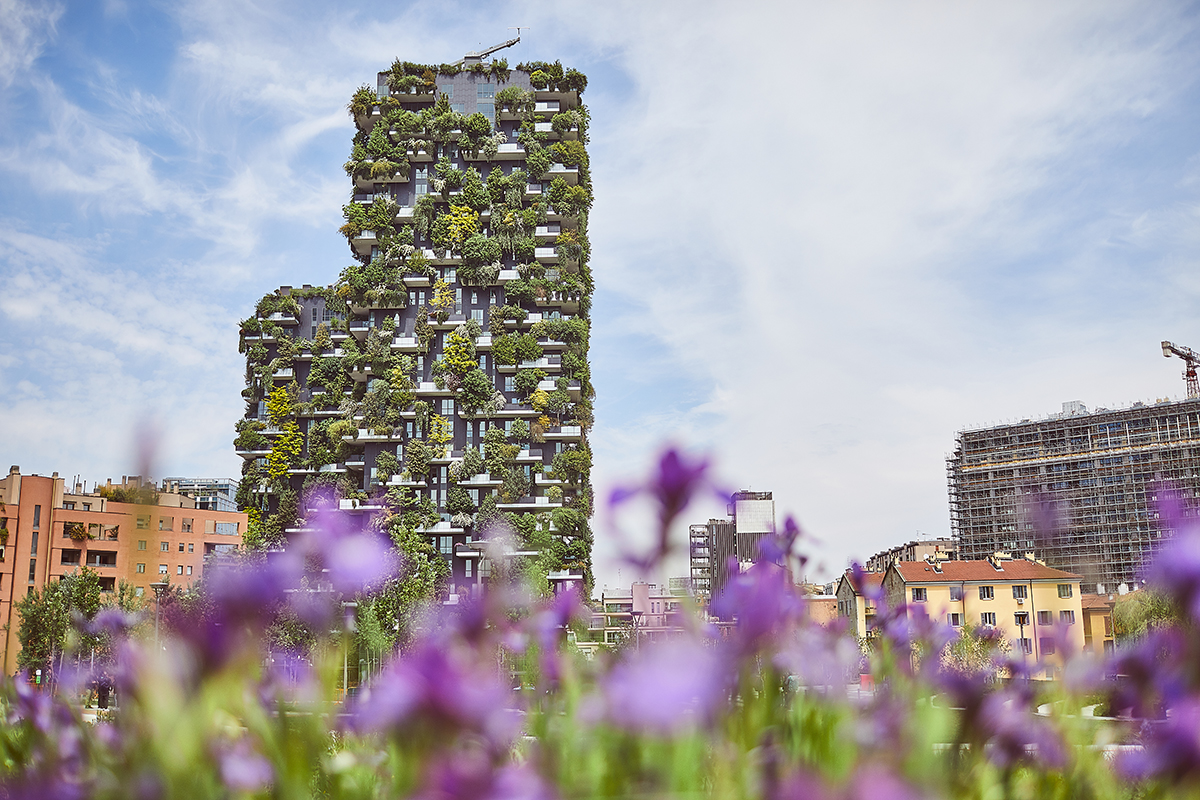
Bosco Verticale at Residenze Porta Nuova
It is now seen as a sustainable model for the future of tall buildings. Working with Diller Scofidio + Renfro and Stefano Boeri Architetti we are taking the concept further at Porta Nuova with Pirelli 39, a mixed-used project which includes the sustainable refurbishment of an existing building and the development of Torre Botanica. The buildings base is connected to the Biblioteca degli Alberi Milano (BAM) or “library of trees” – the public park and botanical garden that serves as a natural oasis and community engagement hub of Porta Nuova.
LUX: How has the public-private partnership with the Municipality of Milan been game-changer in terms of enabling a more sustainable approach?
KRC: Sustainable city making is not possible without strong partnerships. We are very fortunate to have had sensitive administrations for consecutive mandates in the Municipality of Milan that shares the vision to create a more sustainable, green city, designed around people, rather than cars. They shared our vision to make Porta Nuova a fully pedestrianised neighbourhood centred around the natural environment presented in BAM.
Through an innovative public-private partnership between the City and COIMA, the Fondazione Riccardo Catella has been responsible for the management, security, maintenance and cultural programme of the BAM since July 2019. This is the first ever public-private partnership agreement for the management of a public park in Italy and it would not have been possible without the strong long-term commitment and understanding by both parties.
LUX: What strategies for Porta Nuova have you found particularly effective at a human level to help foster a sense of community and a sustainable ecosystem?
KRC: Fundamentally, we believe in placing nature and humans at the centre of all our developments and that this approach leads to real value creation. It is important to listen to people to understand their vision for the urban space in their communities and ensure that our designs can improve their quality of life. For example, at BAM we produce a diverse programme of more than 250 cultural moments and activities each year for residents, workers, and visitors.
This has a big focus on wellbeing and has a range of activities dedicated to senior citizens. We had actually planned to suspend the outdoor program in the coldest months of January and February and resume in March. Instead the group that meets every week asked us to continue saying it was the best morning of their week because they got together, socialized, had coffee after, so of course we kept the programme running over those months.
I know it seems small but when you are managing at a neighbourhood level in the centre of a city, listening to your end user of the public space helps create a type of community which we feel will be resilient over time. This what we mean by focusing on the long-term sustainability of the entire neighbourhood, not just specific buildings. The park and the rich cultural programme work together to create a sense of community – and furthermore, with the Fondazione we would like to create a sustainable business model for this kind of public-private partnership that could be replicated in other parks in other cities across the globe.
LUX: In your approach to the development of the Olympic Village 2026 at Porta Romana, how important is sustainability including ensuring a enduring legacy?
KRC: We are working with Fondazione Milano Cortina and the Italian Government to set a very high standard regarding sustainability for the Olympic Village and we hope the legacy will become a template for a more sustainable approach to future Olympic Games (and global sporting event) development. It will also leave a positive legacy for Milan. After the Games, the village will be transformed into affordable student accommodation, with 1,700 beds, addressing a major shortage of modern student accommodation in Milan.

Plans for the 2026 Winter Olympic Village at Porta Romana
The student accommodation will sit within a wider urban neighbourhood including affordable housing, co-working facilities, community amenities, public spaces and parks and gardens. The Olympic Village Plaza will become a neighbourhood square, with shops, bars and restaurants at street level, and space for farmers’ markets and moments open to the community. If the Games are to be the success story that we all envision, environmental and social impact must be a driving force behind those plans.
LUX: How are you ensuring the Porta Romana project will be implemented to minimise environmental impact?
KRC: The Olympic Village itself actually only comprises only around 15% of the total investment in the regeneration of the former Porta Romana railway yard, so you can understand the scale of the project. Our vision for Porta Romana, together with the partners of the project Covivio and Prada Holding, is that the district will be grafted into the surrounding neighbourhoods, becoming a vibrant, green, sustainable and healthy place that is wholly part of the city, where work and leisure activities will be at the centre of life in the neighbourhood.

Plans for community gardening within the public park at Porta Romana
Working with the architects selected for the masterplan – Outcomist, Diller Scofido + Renfro, PLP Architecture, Carlo Ratti Associates and ARUP – and with Skidmore, Owings & Merrill (SOM), winner of the Olympic Village tender, Porta Romana is designed to have near zero environmental impact. It will also include a wide central park and gardens designed by Elizabeth Diller, the landscape designer of the New York Highline, with a ‘suspended forest’, which could become a new major tourist attraction in Milan. Altogether around half the site will be gardens or greenspace. Through this approach we are working to ensure the project sets the bar even higher in terms of sustainable urban development
LUX: How important is technology in creating sustainable neighbourhoods and communities?
KRC: Technology has a big role to play in delivering a sustainable scheme, whether through gathering and measuring the sustainability performance of the buildings or increasing community engagement and participation in initiatives on a neighbourhood level. At Porta Nuova we are piloting a ‘smart’ neighbourhood project, with an infrastructure of sensors and Internet of Things (IoT) devices capable of acquiring information in real time about the behaviour of users and their needs and the quality and performance of the infrastructure in the district.
This works alongside the Porta Nuova Milano neighbourhood app, which allows users to interact with buildings and access an extended range of services within the residential, office, retail and public spaces. The aim is to facilitate people’s lives and at the same time build the sense of community and encourage more environmentally conscious behaviour. We are also supporting a tech accelerator programme on site at Porta Nuova, called HabiSmart, with start-ups focused on transforming real estate through technology. The startups are hosted in the COIMA HQ and they are able to test their prototypes within the Porta Nuova district. This enables them to get real-time feedback from the field, accelerating the process of development and scale-up.
LUX: Is there one sustainable project you think is low cost and particularly impactful that could be scaled globally?
KRC: The built environment accounts for around 40% of global emissions. If the industry were a country, it would be the third largest emitter in the world, behind China and the US. We are in an emergency and time is running out. We now have the technology to deliver zero carbon in operations during the life of the buildings, but we need to look much more closely at the reuse of existing buildings to reduce the currently unavoidable embodied carbon emissions generated through the construction process.

Pirelli 39, with La Torre Botanica and the Pirellino Tower
We need to change mindsets so that the first principle is to examine whether an existing building can be modernised and refurbished rather than demolished, as we are doing with the Pirelli 39 project that will see the existing 1960s Pirellino office tower refurbished to create a highly sustainable modern office building created out of the existing structure and standing next to La Torre Botanica.
Retrofit, reuse, repurposing, wherever possible, and integration of biodiversity in the urban projects is what we must all seek to do more. We need to stop viewing sustainability as an additional cost, but as integrated into the core of the business model that can mitigate risks and maintain returns long term while contributing to a healthier environment and a more cohesive social surrounding.
Find out more: www.coima.com
The multi-project developer, Red Sea Global has launched two new brands to push forwards its sustainability ethos into one of the world’s most regenerative destinations, The Red Sea and Amaala
Last year, Red Sea Global declared that it was going to create subsidiary businesses with a focus on sustainability. Subsequently, the launch of WAMA and Galaxea were announced. WAMA is responsible for creating rejuvenating water sport experiences such as stand-up paddle-boarding through mangrove forests, to sailing through the Red Sea’s soft swells. Galaxea’s focus is solely on diving, for guests to see the life below the waters and to educate people about the prevalent coral in the Red Sea.
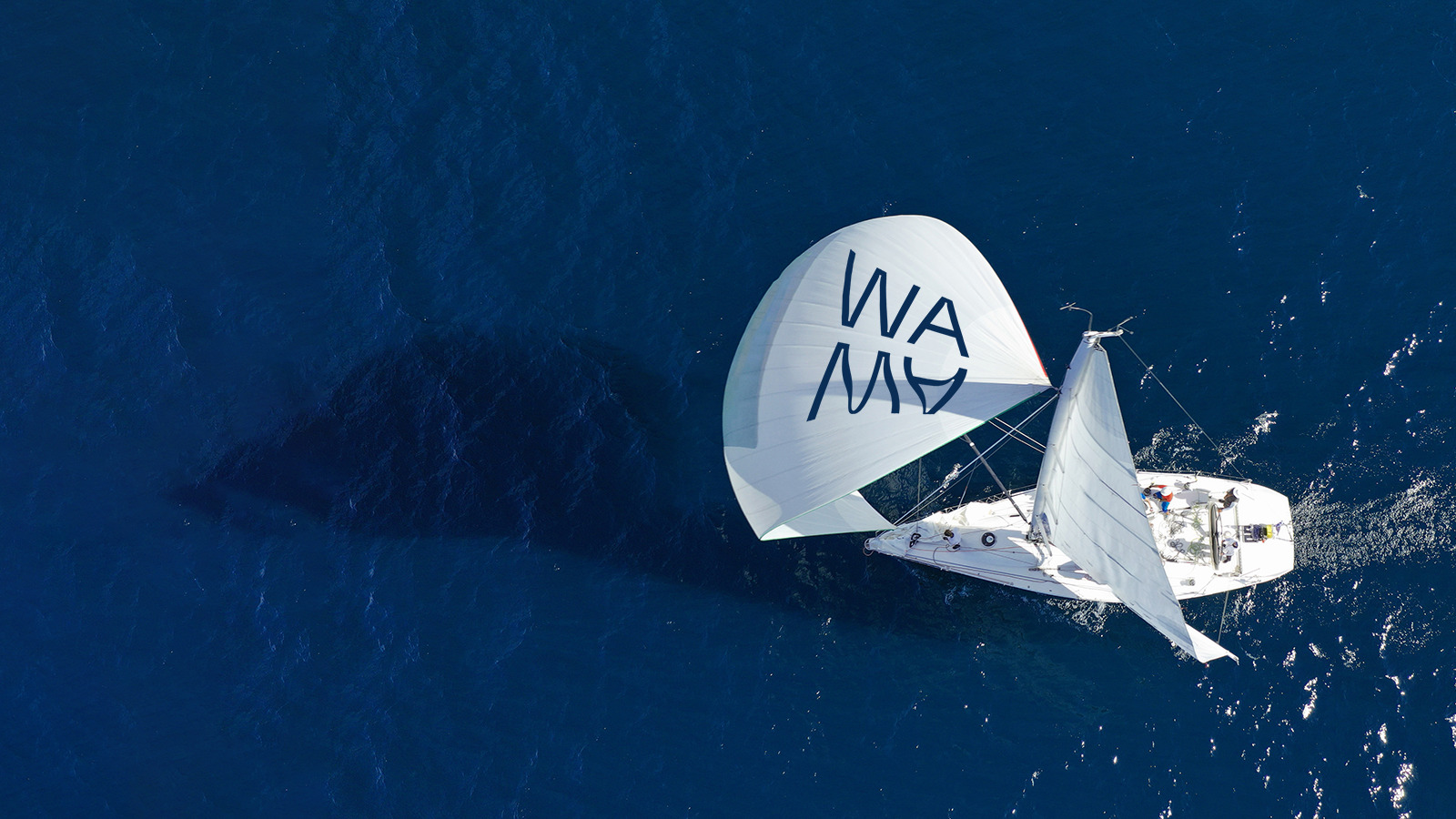
Last year, after an eleven month research study of the Al Wajh lagoon, a rich diversity of habitats, flora, and fauna were found.
Follow LUX on Instagram: luxthemagazine
These include a significant number of endangered and critically endangered species such as the Halavi Guitarfish, Hawksbill Sea Turtle and Sooty Falcon, as well as a thriving, eight-meter-high single coral colony estimated to be around 600 years old.

“These brands have been created with sustainability at their core and will continue to build on our ambition to deliver a regenerative approach to tourism development and operations. It is our hope that eventually they will become standalone brands operating at destinations around the world,” says CEO of Red Sea Global, John Pagano.

Along with the launches of WAMA and Galaxea, Red Sea Global also announced its partnership with The Ocean Race. This came out of their mutual passion for ocean health and their aim to drive regeneration of life in water and on land.
Read more: Art Dubai opens in support of South Asian artists
The Ocean Race has worked very closely with sailors throughout its history, and the partnership is not only intended to benefit the natural environment, but also to help inspire the next generation of Saudi sailors.
Find out more: www.redseaglobal.com/amaala

Stanford University has the most funded startup founders among its alumni
Deutsche Bank’s International Private Bank gathered a group of 70 next gens for a Global Innovation Summit at the heart of technological advancement, Silicon Valley. The group heard from leaders in the tech industry and learnt about the potential of technology like artificial intelligence and machine learning to solve some of the world’s most pressing problems for a better future
Among the plethora of respected speakers at the summit were John Chambers, former executive chairman and CEO of Cisco Systems, Jensen Huang, NVIDIA founder, Nikesh Arora, Chairman and CEO of Palo Alto Networks, Lloyd Minor, Dean of the Stanford School of Medicine and Thomas Kurian, CEO of Google Cloud.

Gil Perez, Deutsche Bank’s Chief Innovation Officer and Thomas Kurian, founder of Google Cloud in conversation at Google HQ
Being at the headquarters of these institutions provided a unique setting enabling participants to witness first hand the advancements in artificial intelligence, machine learning, blockchain and even everyday life.

Salman Mahdi, Deutsche Bank Private Bank’s Vice Chairman and Jensen Huang, Founder of NVIDIA
At Google HQ the group worked on an interactive session with Google’s Innovation team, solving real-world problems. It became abundantly clear how vital their work continues to be. Their goals are not only to solve the world’s problems through technology, but also to search for more problems in order to be able to find solutions before issues arise.

Lloyd Minor, Dean of the Stanford School of Medicine
The breakthroughs in medicine, molecular biology, sustainability and immunology also resonated with the group during a visit to Stanford University.

Salman Mahdi, Deutsche Bank International Private Bank’s Vice Chairman, attended the summit along with the group, having made access to these CEOs, founders and pioneers possible.
He declared, “there is no better place in the world to come to than Silicon Valley to get this window into the future. I hope people will use an opportunity like this to refocus on ten, twenty, fifty years down the line. What we do today will change the world in decades.”
Find out more: www.db.com/innovation-network

Bittescombe Lodge and Deer Park is situated on the edge of Exmoor National Park, surrounded by nature and tranquility
Hidden in the hills of Somerset lies Bittescombe lodge, now part of Mandarin Oriental’s exclusive homes collection in collaboration with StayOne. Candice Tucker visits the property and reports back
Mention the English countryside and it usually conjures up an image of gently rolling hills with a patchwork of fields separated by hedgerows, rather than the grandeur of the Scottish Highlands.
Follow LUX on Instagram: luxthemagazine
Just 1 hour and 39 minutes away from London, by train, I discovered the best of both worlds. Nestling near Taunton, in Somerset, is Bittescombe Lodge and Deer Park. The short drive to the property provides spectaculars view of seemingly never ending hills, covered in a quilt of yellow and green to being surrounded by trees, which transports your imagination to the great Canadian forests.

The home’s interior design and artworks were all curated by the owner
The Lodge is located in a completely secluded part of Somerset, sitting on 400 acres of land. Inside the property is intricately designed to the most exacting detail with silk and wooden walls, eccentric coloured furniture and a variety of artworks, all curated by the owner, yet it still maintains an English countryside charm.

The living space which includes a full size snooker table and cinema screen
The amenities are endless from a cinema, indoor swimming pool and spa (including an in house masseuse) to a gym and paddle court. The owners have ensured that the instructors for all sports including shooting and clay pigeon shooting are of the highest calibre. We enjoyed sniper shooting (a plastic deer!) whilst sipping hot apple cider and bone broth soup prepared by the in-house Michelin Star, Mandarin Oriental approved chef. Alternatively, you might prefer to snuggle up with a good book sitting in the little library looking down at an indoor well that’s 15m deep.

Within the spa are a heated indoor swimming pool, jacuzzi, gym, sauna and massage room
Each bedroom is unique but all are luxurious and cosy. Our bedroom had a plush bright coloured headboard with wooden floors and thick rugs to sink your feet into. On the bed your name is embroidered onto your pillow case and even your hot water bottle! It’s these distinctive features that make the property feel like you are in your own luxurious home rather than simply a 5-star hotel.
With hidden doors in the walls it’s what you imagine your childhood self would dream about playing hide and seek in.

The service at the lodge is mirrored to that of Mandarin Oriental’s standards
At dinner we ate locally sourced venison from the deers reared at the estate. The owners explained that sustainability is an essential part of their ethos. At breakfast we could request whatever we desired. The hot danish pastries and soft poached eggs with ripe avocados on toasted sourdough was the ideal breakfast before a day in the outdoors.

Each bedroom is equipped with a fireplace and beautiful views of the estate
The trails around the estate echo the scenes enjoyed on the way to the Lodge, but then you hit the deer park. With over 150 deer roaming free around the park one becomes enchanted by families of deer gracefully bounding across the land or stopping to drink at a meandering stream.
Read more: Edgewood Resort, Lake Tahoe Review
With up to ten rooms available, we recommend the stay for group trips. If you demand the full grand British countryside experience, Bittescombe Lodge and Deer Park provides it.
Rates: From £20,880/2-nights (approx. €23,500/$25,000)
Book your stay: www.stayone.com/mandarin-oriental-exclusive-homes/bittescombe-lodge

The 2023 edition of Art Dubai will feature 24 Dubai-based galleries, the largest number the fair has ever had, reflecting the continued growth of Dubai’s artistic ecosystem and its increasing reputation as a global creative and cultural hub
The most significant art fair in the Middle East opened today with a focus on artists from South Asia. LUX reports on the multi-sensory experience that Art Dubai is currently offering to its visitors
Art Dubai has traditionally bee a blend of art from the Middle East from surrounding regions and the rest of the world. This year the focus is firmly on South Asia, specifically countries like India, Pakistan and Bangladesh, whose thriving contemporary art scene is informed by ancient cultural and craft influences as well as much more modern societal conversations and clashes.

Art Dubai is featuring over 130 contemporary, modern and digital gallery presentations from six continents
“South Asian artists are receiving reinvigorated attention on the world scene due to a new generation of collectors, artists and galleries. Many of the most interesting artists from the region have been creating significant works for years or even decades, as the recent Pop South Asia exhibition at Sharjah Art Foundation, hosted by Sheikha Hoor Al Qasimi, demonstrated. Although there is a current growing interest in South Asian art, it is also important for collectors to understand the cultural and historical nuances that inform it.”
Follow LUX on Instagram: luxthemagazine
“People in these countries have been creating notable art works in a variety of mediums for a very long time and we should be careful to avoid a simplistic western-orientalist perspective that it is just being ‘discovered'”, says Durjoy Rahman, LUX partner, philanthropist and founder of the Durjoy Bangladesh Foundation.

The 2023 fair includes over 30 first-time participants and more than 60% of the gallery programme is drawn from the Global South
Rahman’s foundation supports both the Sharjah Art Foundation and Art Dubai.
The programme is unlike other art fairs, delivering daily performances and food-based experiences spanning Dubai to South Asia.
Read more: Rana Begum and Durjoy Rahman on South Asian art’s global ascendancy

The focus on the Global South has been heightened by a new commissioned performance programme in partnership with leading South Asian galleries and institutions
The themes explored at the fair include those of community, celebration, hope and connection. Among the significant galleries involved in the South Asian focus at Art Dubai are Galleria Continua, Efie Gallery and Unit London.
Art Dubai is open from Wednesday 1st-Sunday 5th March 2023
Find out more: artdubai.ae
Recent Posts
Archives
- June 2025
- May 2025
- April 2025
- March 2025
- February 2025
- January 2025
- December 2024
- November 2024
- October 2024
- September 2024
- August 2024
- July 2024
- June 2024
- May 2024
- April 2024
- March 2024
- February 2024
- January 2024
- December 2023
- November 2023
- October 2023
- September 2023
- August 2023
- July 2023
- June 2023
- May 2023
- April 2023
- March 2023
- February 2023
- January 2023
- December 2022
- November 2022
- October 2022
- September 2022
- August 2022
- July 2022
- June 2022
- May 2022
- April 2022
- March 2022
- February 2022
- January 2022
- December 2021
- November 2021
- October 2021
- September 2021
- August 2021
- July 2021
- June 2021
- May 2021
- April 2021
- March 2021
- February 2021
- January 2021
- December 2020
- November 2020
- October 2020
- September 2020
- August 2020
- July 2020
- June 2020
- May 2020
- April 2020
- March 2020
- February 2020
- January 2020
- December 2019
- November 2019
- October 2019
- September 2019
- August 2019
- July 2019
- June 2019
- May 2019
- April 2019
- March 2019
- February 2019
- January 2019
- December 2018
- November 2018
- October 2018
- September 2018
- August 2018
- July 2018
- June 2018
- May 2018
- April 2018
- March 2018
- February 2018
- January 2018
- December 2017
- November 2017
- October 2017
- September 2017
- August 2017
- July 2017
- June 2017
- May 2017
- April 2017
- March 2017
- February 2017
- January 2017
- December 2016
- November 2016
- October 2016
- September 2016
- August 2016
- July 2016
- June 2016
- May 2016
- April 2016
- March 2016
- February 2016
- November 2015
- September 2015
- June 2015
- May 2015
- March 2015
- September 2014
- August 2014
- July 2014
- May 2014
- April 2014
- March 2014
- February 2014
- January 2014
- December 2013
- November 2013
- October 2013
- September 2013
- August 2013
- July 2013
- June 2013
- April 2013
- March 2013
- February 2013
- September 2012
- July 2012
- June 2012
- March 2012
- February 2012
Categories
- Adventure Travel Issue
- Aesthete Issue
- Architecture
- Art & Design
- Art & Photography
- Art collectors
- Autumn 19
- Autumn/Winter 2020/2021
- Autumn/Winter Issue
- Bespoke Issue
- Business
- Cars
- Cars & Collectibles
- Case Study
- Celebrities
- Culture
- Culture Issue
- Design Issue
- Dining Issue
- Earth Issue
- Family Issue
- Fashion & Jewellery
- Features
- Food
- Future Luxury Issue
- Health
- Hedonism Issue
- Image Issue
- Italy Issue
- Latest Stories
- Leaders & Philanthropists
- Leaders Slider
- Love Issue
- Luxury Travel Issue
- New Luxury Issue
- Online Exclusive Slider
- Opinion
- Spring 2020
- Summer 19 Issue
- Summer 2020
- Summer 2021
- Sustainability
- Taste Issue
- The Beauty Issue
- Travel
- Uncategorized
- Water Issue
- Winter 19 Issue
Popular Posts
Categories
- Adventure Travel Issue
- Aesthete Issue
- Architecture
- Art & Design
- Art & Photography
- Art collectors
- Autumn 19
- Autumn/Winter 2020/2021
- Autumn/Winter Issue
- Bespoke Issue
- Business
- Cars
- Cars & Collectibles
- Case Study
- Celebrities
- Culture
- Culture Issue
- Design Issue
- Dining Issue
- Earth Issue
- Family Issue
- Fashion & Jewellery
- Features
- Food
- Future Luxury Issue
- Health
- Hedonism Issue
- Image Issue
- Italy Issue
- Latest Stories
- Leaders & Philanthropists
- Leaders Slider
- Love Issue
- Luxury Travel Issue
- New Luxury Issue
- Online Exclusive Slider
- Opinion
- Spring 2020
- Summer 19 Issue
- Summer 2020
- Summer 2021
- Sustainability
- Taste Issue
- The Beauty Issue
- Travel
- Uncategorized
- Water Issue
- Winter 19 Issue


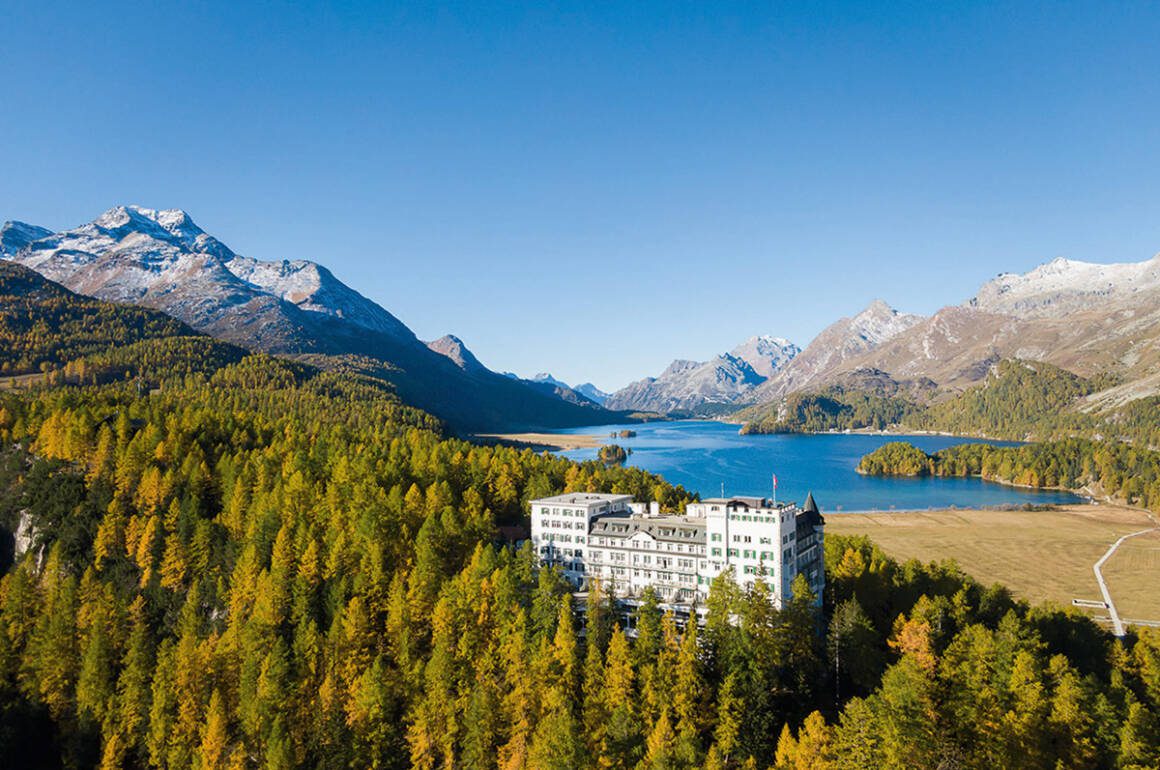







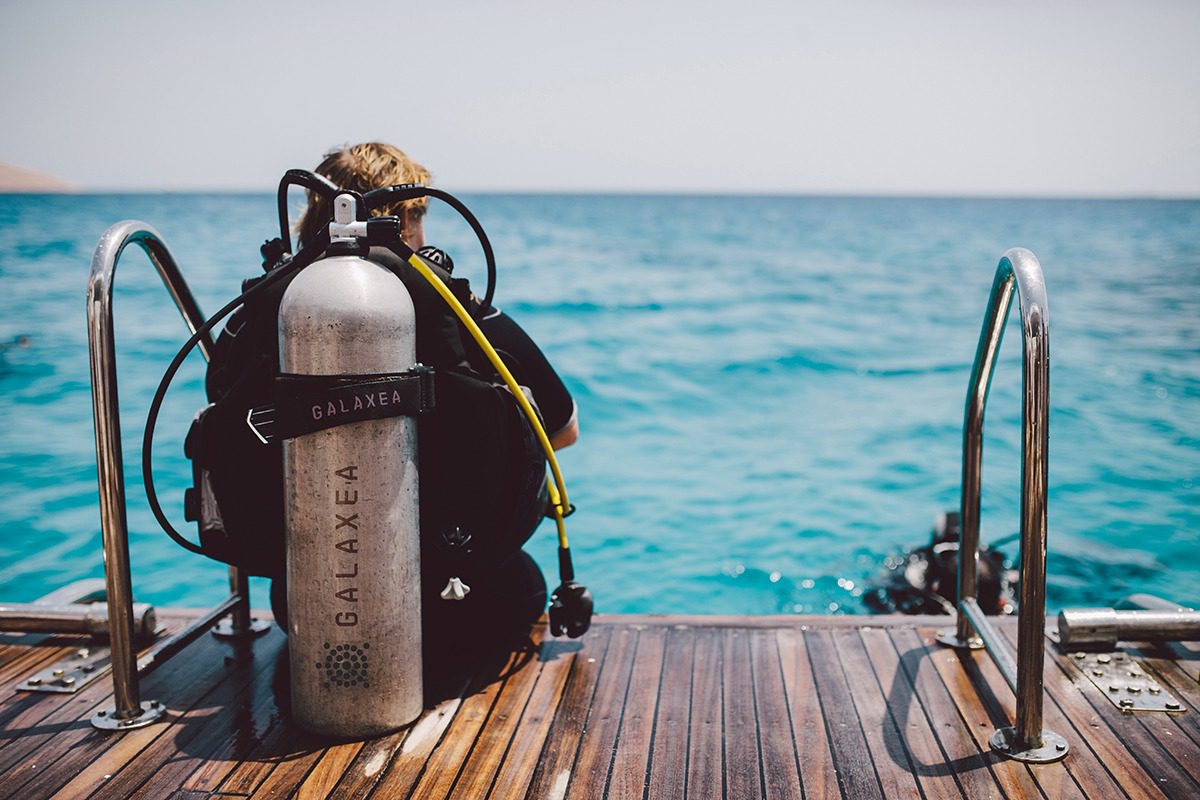








Recent Comments